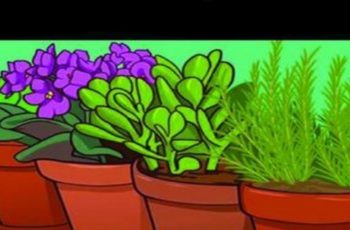Ad Blocker Detected
Our website is made possible by displaying online advertisements to our visitors. Please consider supporting us by disabling your ad blocker.
3. Planting Tomatoes Too Close Together
It’s natural to want a bountiful harvest, but overcrowding your tomato plants can hinder their growth. When plants are too close together, they don’t get enough airflow and become shaded by neighboring foliage. To ensure your tomato plants have enough space to thrive, it’s essential to follow recommended spacing guidelines.
To determine the optimal spacing for your specific tomato variety, consult the seed packet or research online. In general, determinate tomato plants should be spaced 18 inches to 2 feet apart, with each row spaced 4 feet apart. For indeterminate tomatoes, space them 2 to 3 feet apart and leave rows 5 to 6 feet apart.
If you’re unsure whether your tomato plants are determinate or indeterminate, it’s worth learning the difference to make the most of your gardening efforts. By giving your tomato plants enough room to grow, you can improve their airflow and sunlight exposure, leading to a healthier and more fruitful harvest.
4. Planting the Wrong Type of Tomatoes
Choosing the right type of tomato plant or seeds is a critical step in the planting process, and it depends on your goals for your harvest. Determinate tomato plants are a popular choice for home gardens because they are easy to manage and typically grow to about 3 feet in height, making them ideal for small-space gardeners. These plants produce fruit all at once, which is great for canning or preserving.
In contrast, indeterminate tomatoes can continue to grow and produce fruit almost indefinitely, with some plants reaching heights of up to 20 feet. These plants are ideal for those who want a continuous harvest of tomatoes for salads and other homemade dishes. Indeterminate plants will keep producing fruit throughout the summer and into fall until the first hard frost.
It’s important to note that determinate and indeterminate plants are just two of many different tomato varieties available. When choosing a type of tomato to plant, consider factors such as flavor, texture, and size to ensure that you get the best possible yield for your gardening goals.
5. Watering Tomatoes at the Wrong Time of Day
To ensure optimal growth and health of your tomato plants, it’s important to water them at the right time of day. Watering your tomatoes in the late afternoon should be avoided, and instead, you should aim to water them in the morning or at dusk when the sun and temperatures are at their lowest.
Ideally, early morning is the best time to water, but evenings are also suitable as long as you avoid watering the plants when the sun is high and temperatures are high, as this can cause water to evaporate before the soil can absorb it.
6. Watering Tomatoes Too Often or Not Enough
To ensure healthy tomato plants, it’s important to find the right balance when it comes to watering. Overwatering can negatively impact the flavor of the fruit while underwatering can lead to diseases. Rather than shallow and frequent watering, consider setting up a home drip irrigation system for a gentler approach.
As the plants mature, it’s best to practice “deep watering” by slowly soaking the soil, allowing water to penetrate deeply into the roots. A good rule of thumb is to deeply water once or twice a week, but sandy soil may need watering every four to five days, while heavy soil can go seven to 10 days.
Consistent moisture is key, so check the soil daily by placing your finger an inch or two beneath the surface to ensure it’s evenly moist. However, avoid drastic or irregular changes in moisture levels, which can lead to issues like splitting and blossom end rot. Especially near the end of the season, reducing irrigation can enhance flavor, but be sure to keep the plants well-hydrated during the growing season.
7. Fertilizing Tomatoes Too Much or Not Enough
Proper fertilization is essential for healthy tomato plants, but too much or too little can cause problems. Blossom end rot, for instance, can result from calcium deficiency caused by uneven watering, while over-fertilization with nitrogen can lead to excessive foliage growth, pests, and less fruit. Choose a complete, organic tomato fertilizer that includes NPK micronutrients and calcium. Look for a balanced dose of phosphorus to encourage fruit production.
There are different types of tomato fertilizers available, including granular, water-soluble, and slow-release options. It’s important to follow the manufacturer’s instructions for application rates and timing.
Remember that over-fertilization can be just as harmful as under-fertilization. Regularly inspect your plants for signs of nutrient deficiencies or excesses, such as yellowing leaves, stunted growth, or leaf burn, and adjust your fertilizer application as needed.


No Responses